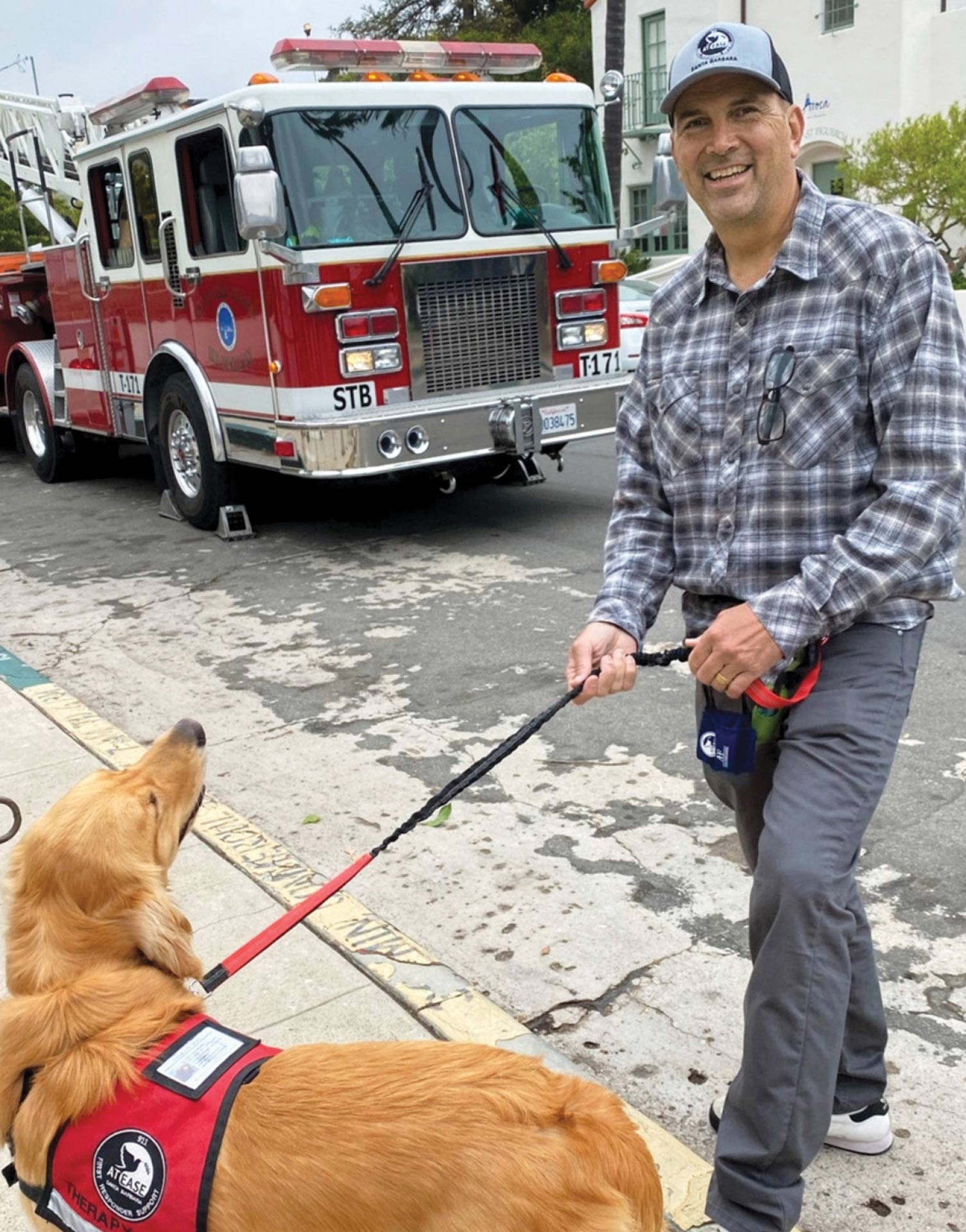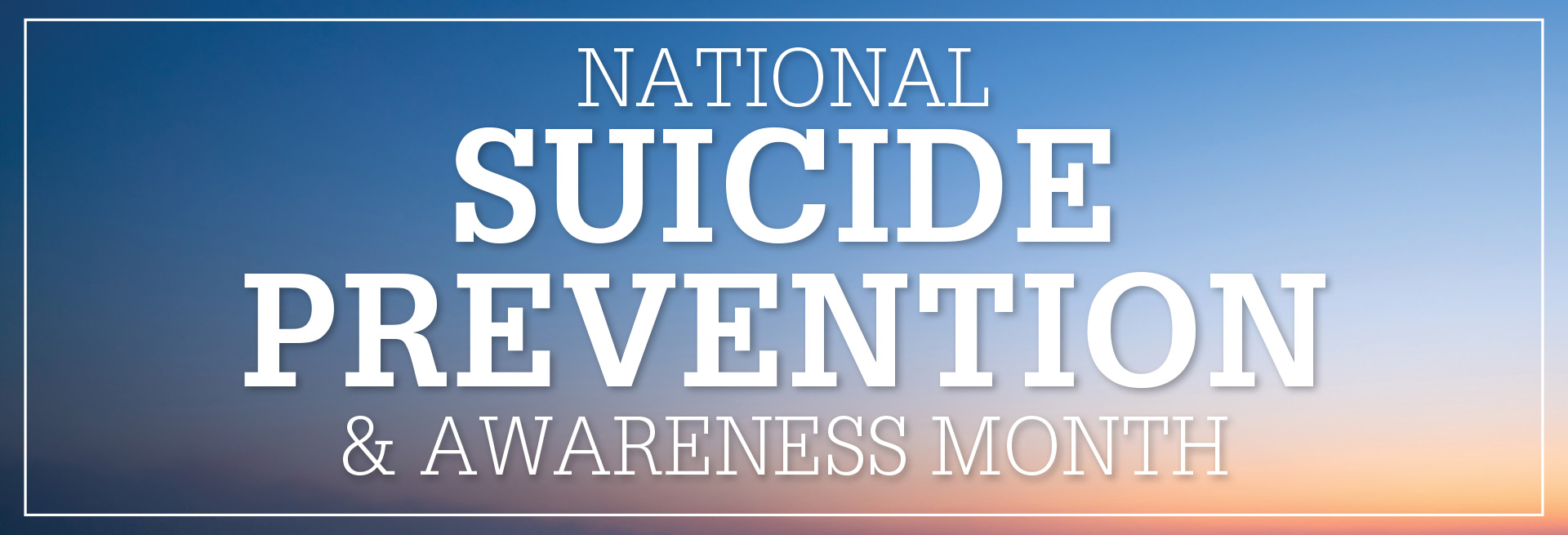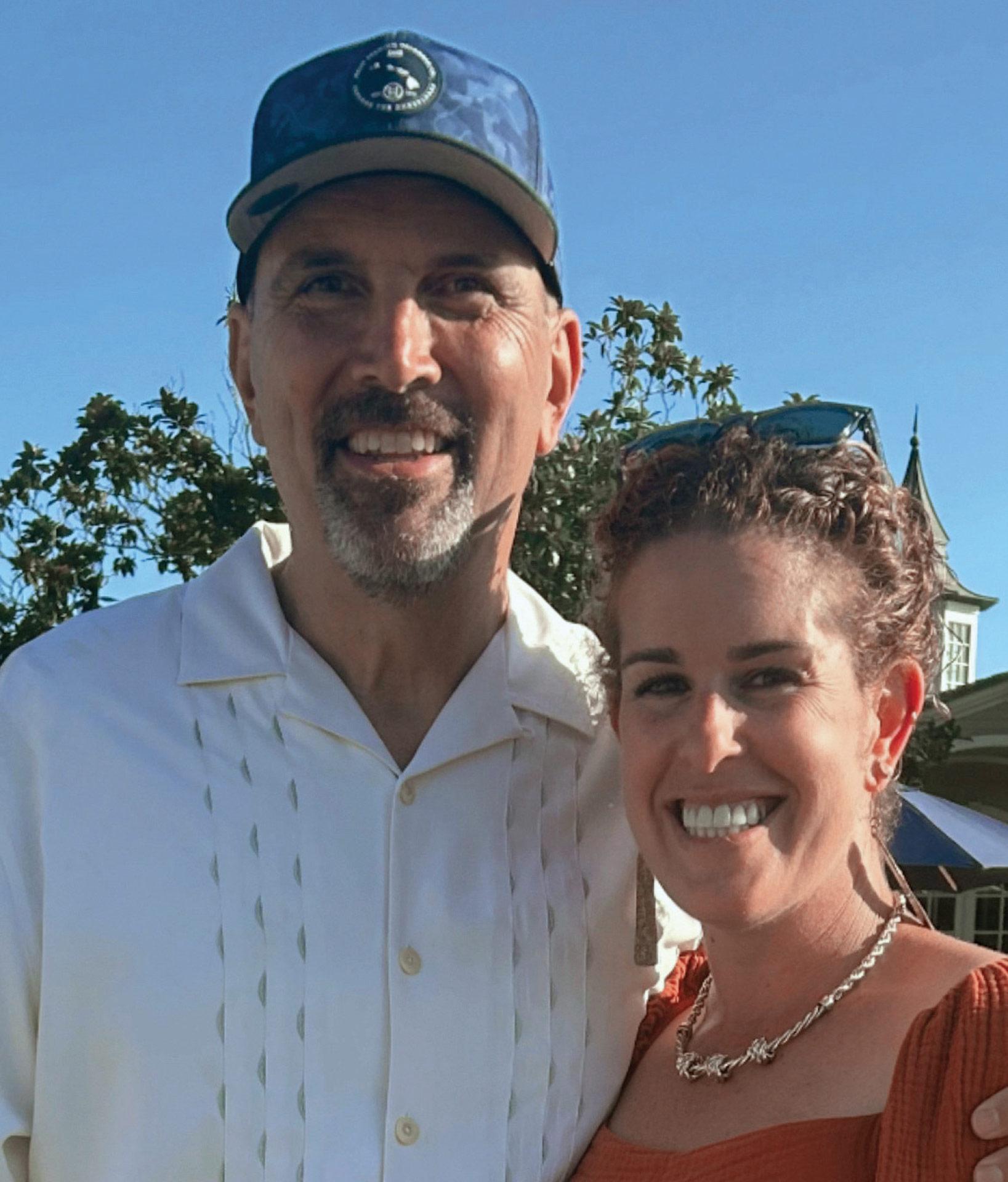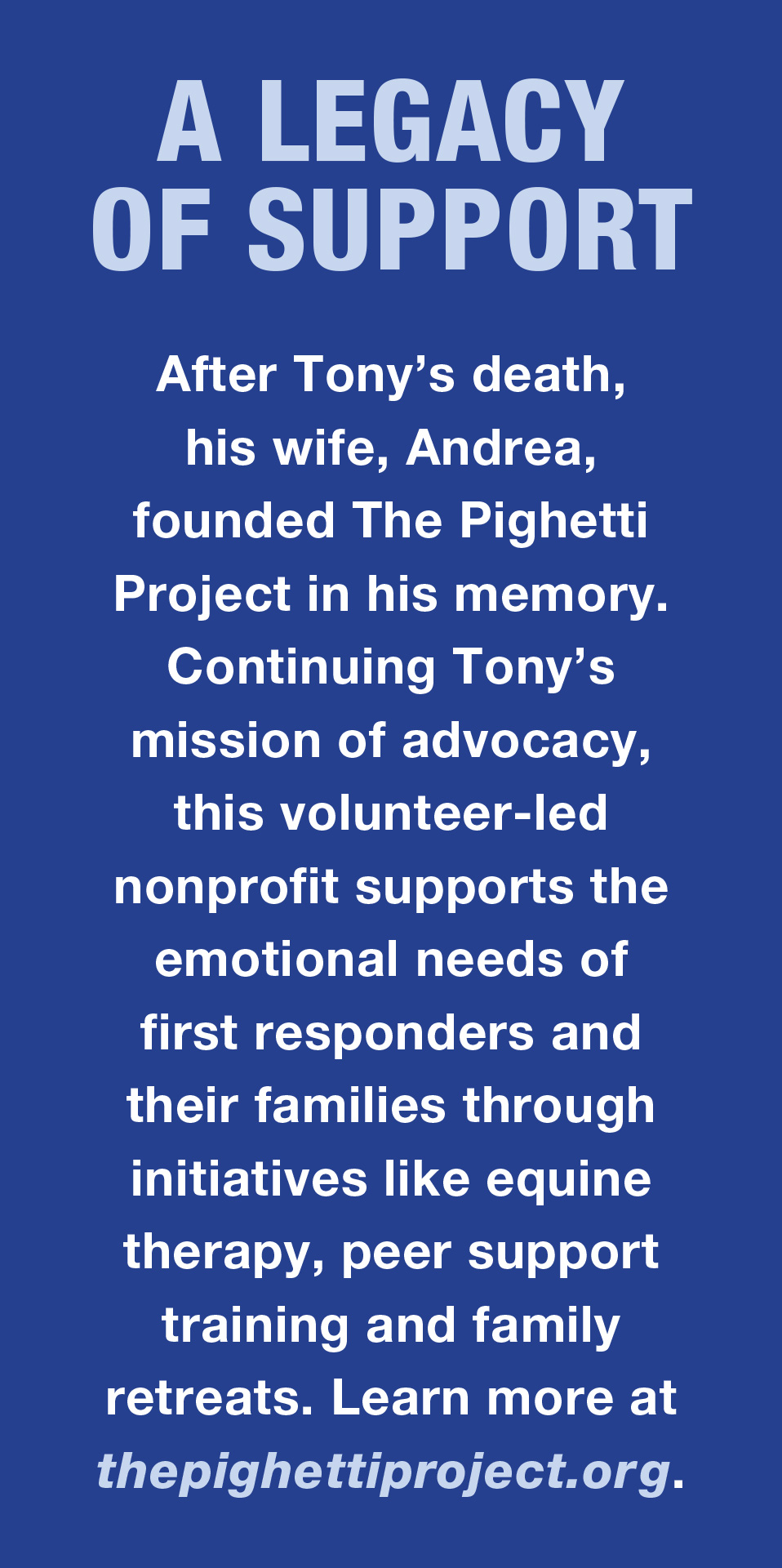
October 9, 2024, was arguably one of the worst nights of my life. It started right after I fell asleep. The kids had been tucked in and the house picked up. My husband was downstairs, and I had been blissfully unaware of the external world, answering to no one but the sandman, until the phone rang.
“Jeremy the firefighter” flashed across my screen. I thought to myself, Why is Jeremy calling me? Are his people OK? Do I need to suit up for a debrief? Is he in need of some support?
Me: “Hey, what’s going on?”
Jeremy’s voice was businesslike, matter-of-fact. “Tony. Something’s wrong.”
Sitting up and shaking off the sandman dust, I replied, “Something’s wrong with Tony?”
“I’m on my way to his house. Andrea [his wife] called. We think he may be suicidal. His car is gone. Jason [also a firefighter] is on his way too.”
It was in that moment I could feel everything inside me break — what I imagine it must feel like to get hit by a car and as you are flipping through the air, seemingly in slow motion, you can feel each of your bones snap and crumble one by one and turn to jelly.
I was in shock, torturous shock. “Fuck you, no he didn’t. Shut the fuck up. You’re lying.”
The humanity crept back into Jeremy the firefighter’s voice. “Doc … Cherylynn … I’m texting you the address. Get in your car and start over. I’ll meet you there.”
“I’m on my way.”
I hung up the phone and by this time was standing alone in my bedroom. I shook away the emotion. It was time to act, time to put on the big-girl pants. You shall not fall apart. Just get there. Get in the fucking car.
This man could have called nearly 50 people who would have dropped whatever they were doing to get to him.
Tony and I had been colleagues and friends for a number of years. He was a goofy, tall, proud and humble servant. We met right after he retired from the fire service, because we were supposed to. We had a shared mission — to help first responders in our community connect with culturally competent clinical care. Admittedly, I don’t remember the first time I met Tony. He entered my life like a bat out of hell, or perhaps more like a firefighter out of a La-Z-Boy. Tony had a story (most people worth their weight do), and he wanted to use his experiences to help others. I was down for the cause, and just like that we became partners. Joined at the hip, consistently problem-solving crises and long-game initiatives, we became the we share an office kind of partners.
I went from standing in my bedroom to gathering my clothes, trying not to wake the kids. The idea of me leaving in the middle of the night is not uncommon. I am often answering work calls or responding to crisis negotiation callouts at all hours. After the first half-dozen, my husband and I settled into a routine. He grabs me coffee while I’m getting dressed, I tell him a little bit about where I am going, and then, poof — I pop smoke. He heard me taking a call and meandered to the bedroom.
Him: “Where are you off to?”
I knew if I started talking I would start feeling, and if I started feeling I would start crying, and if I started crying I wouldn’t get there as fast. “I can’t … I’m going to shower and then I’ll text you from the car. I just need to get to my car.”
As though me not telling him details was a personal slight, he responded with “Oooookay” and walked back downstairs.
Within minutes, I had showered, grabbed some essentials and was en route to Andrea. I had to get to Andrea.
The first line-of-duty death I ever deployed to was for a police department. Within moments of hearing about the shooting, I was on my way to the location, not knowing where I would be deployed until Tony called to tell me. Although he was a firefighter, he really did love cops, so much so he had named his therapy dog Donuts. Whenever anyone asked him why he named his dog Donuts, he would have the biggest shit-eating grin before telling you about how he did it for his brothers and sisters in law enforcement, which was followed by a big belly laugh. He was the funniest guy you ever met — all you had to do was ask him. He and I worked that LODD incident for months. He, Donuts and I went to the officer’s funeral together. After that, we weren’t partners anymore; we were family.
I texted my husband as I was pulling off the freeway: “I’m going to be gone for a while. I don’t know how long. Tony is suicidal. We can’t find him.” I didn’t look at his response. It was time to focus. I knew what I was walking into was going to be a gut-wrenching, life-changing event, and I needed to be present.
I walked through the front door and was greeted with a half-smile and hug from Jeremy and another friend of the family, Greg, one of the retired cops I work with. Jason showed up a few minutes after I did. Andrea was sitting on the couch with one of their adult children and two or three family friends. It was close to 11 p.m. now. The atmosphere in the room was dark and the mood made the air thick. I greeted everyone with a hug and my own version of a half-smile. The guys and I stepped outside to brief. Responders were looking for Tony. “Missing 11-45 subject.” Fucking weird! First they found his car, and then about 10 hours later they found him.

The wait, and the memories
It’s hard to describe what those 10 hours were like. There was a lot of silence and a lot of conversation. Crying and some laughing at each other’s expense to lighten the mood. Shared a beer with one of the guys. Made about a dozen phone calls, waking up my friends and colleagues between the hours of midnight and 3 a.m., starting with “Are you sitting down?”
I have many fond memories of Tony. Most are from our impromptu conversations about our people — our responders — who needed help. In retirement, Tony was the lead peer support guy for all of the in-county fire agencies and had also taken on a role with a first-responder-only treatment center. His impact extended well beyond the county he worked in. He deployed to many mass casualty incidents, supported peer support programs across the nation and was so often the bridge between someone’s rock bottom and hope.
We went to fundraising events on Saturdays, as well as critical incident debriefs and department briefings on the weekdays. Got people into treatment. Went to first responder funerals. Talked resources and strategic planning for our AOR. He knew my kids. I was one of the first to know he was going to become a grandpa. When he called, it didn’t matter what I was doing — I answered, and vice versa. He and I both cherished our relationship and knew if it could have been a text or email it would have been, so a phone call meant right now!
Tony had every resource available to him at his fingertips. I’m not just talking about brochures with information about bereavement, child deaths and where to call when the emotional shit was hitting the fan. I mean this man could have called nearly 50 people who would have dropped whatever they were doing to get to him. Tony was a giver, and everyone saw it. It was what he wanted to be known for, not because of ego, but because of his own history. What people didn’t see — because he didn’t want them to see, what he didn’t want to be known for — was how problematic his medical issues had become.
When the responders found Tony, he had been in the water for hours and was unresponsive. He was taken by ambulance to the hospital. The fire chief came by the house to let Andrea and their children know. They decided to go to the hospital to say goodbye. The guys and I decided it was time to give them some space, so we went to the command post.
The CP had been set up at First Station 1, where Tony worked. Tony’s impact was so great, the CP ended up being active for nearly three full days. Dozens and dozens of people came through, including fire chiefs, police chiefs, cops, firefighters, dispatchers and clinicians. There were coordinated efforts to get food and clinicians to all the fire stations and get the peer support dogs to where people were working, as well as manage the media and the looky-loos.
He could have called 50 people … but he didn’t.

The aftermath
Knowing isn’t enough. You ever find yourself in your doctor’s office, listening to them tell you about how smoking is bad for you and Twinkies are bad for you, yet you can see the nicotine stains under their fingernails and those buttons on the white coat are on the struggle bus? Yeah … knowing isn’t enough. See, one of the paradoxes of the human condition is that we might intellectually know right from wrong, but the behaviors we engage in don’t always line up. “I know sending this email will create a headache for my boss, but I do it anyway (sorry, boss!).” “I know that eating the cookie will be an instant regret, but I eat the damn thing.” “I know this relationship is toxic, but I really want the friendship to work.” You get the picture! In Tony’s case, it’s not that he didn’t know who to call. It’s not that he didn’t know where to go. It’s not that he didn’t know what to do. It’s that he chose another path.
Now, because of his medical condition there is some debate about what state of mind he was in when he made the decision. That is not an issue I intend to broach here, but it should be noted that it is a real thread of this situation.
Back to the CP… Neither Jason, Jeremy nor I were in any place to be leading or operating anything. We were a mess, out of our element. Typically, we are the ones used to managing the shitstorms and command posts — not the ones wanting, needing or asking for support.
I received no less than three dozen texts during those first 24 hours. Everyone knew how close Tony and I were. I had messages from chiefs, colleagues, friends, patients — first responders I met when they were in the basement of their rock bottom and helped pull them through. It was something else to be on the receiving end of this support, and I chose to let it happen. What I wasn’t prepared for was the deployment of my own peer team, the one I had helped to establish at my sheriff’s office.
I vaguely remember a call from our peer support sergeant: “Hey, Doc, how you holding up?” I must not have sounded OK (not that I was trying to), because no less than 45 minutes after that call I saw two of our peer support members — close friends of mine — standing right outside the CP.
And then I broke.
They greeted me with big smiles and open arms, and I knew I now had the permission to let go. I hugged one of my deputies, and when I say I ugly-cried, I mean I ugly-cried. I was surrounded by cops and firefighters I had helped through the years, and here they were ready to return the favor. It was a beautiful and yet terrible moment.
One of the deputies, Alvi, drove my car home. The other deputy (he is a bit media-shy, so let’s just call his dumb ass Rambo) drove me home. On the way home, he called my husband (shit, I hadn’t contacted him since last night before I got on the freeway!) and read him in on the situation. He also texted him some pointers for how to help me navigate the next few hours and days. “Have someone else pick up the kids,” Rambo told him. “This isn’t a one-and-done. She’s going to hurt in a way she hasn’t hurt before … and it’s going to be hard.”
As you might imagine, the next few hours were an emotional roller coaster, and I hate roller coasters.
Over the next few days, I spent a lot of time at the CP. I needed to be around people who appreciated Tony as much as I did and “got it.” In some sense, I was still showing up for my first responders — just not as a psychologist sitting in a therapy chair, but as a human being sharing a moment of grief with people who mattered.
Over time, the world moved on, as the world tends to do. It’s been almost a year now since that terrible night. I would be remiss if I didn’t mention some of the good that has come from this. Andrea and I have become close friends. We go on walks. I visit her and Donuts with my kids on the way to our family holiday events. I am more mindful of the friendships I have and try not to take for granted the time we have with those we love. It’s so easy sometimes to say, “Let’s try for next week. I’m too tired … too busy … too overwhelmed.” At the risk of sounding like a Hallmark card, this event taught me we may not have next week.
Jeremy, Jason and I have a text thread we have kept up — and for your own plausible deniability reasons, I will say no more on that. If you’ve been in a group text with anyone in public safety, you’re picking up what I’m putting down.
Tony still lives on: in the quiet moments, the belly laughs, the memories and the mission. Do I wish Tony were still here? Yes. Do I think about what I could have, should have, would have done differently? Yes. Have I fully “accepted” the circumstances and put the pain to bed? No. I don’t know if anyone really does after someone close to you dies by suicide.
The takeaways
In the weeks and months that followed, many who knew Tony started asking me why he did what he did. It was widely known that Tony was the go-to guy who “knew everything” and “had every resource.” My response to this day is “Knowing isn’t always enough.” As professional problem-solvers, we often want to know the “why” of an event so we can put all the pieces together in our minds and be at peace with an incident, a case or a problem. Suicide doesn’t always give us that opportunity, but it can help us reflect, both personally and professionally. The following are some reflections I have gleaned from this event:
- Supplying your colleagues with passive resources, such as brochures and 1-800 numbers, is only part of what makes a wellness unit or peer support team valuable. Active interventions and tools are also needed.
- Don’t always wait to ask the person you are supporting, “Do you want us to send you peer support?” Most people in public safety will say “No” because they don’t want to be a burden. Just send them.
- When deploying peer support to an individual, hand-pick the responders. Don’t just rotate through an on-call list. This demands both intentionality and knowing your people, and both are essential pillars of a good peer support and wellness program. Don’t cut corners … not here.
- Don’t wait until you get to the command post to exchange business cards; have relationships with allied peer teams in the region, because when the “big one” hits, resources run thin and burnout is real.
- Know yourself enough to know when to tap out. If you are emotionally connected to an incident or event, it may be best for someone else to take the reins. This is as critical for therapists as it is for peer support teams. We don’t make the best decisions when emotions are high, and our people need and deserve our best.
- Authenticity and vulnerability are necessary ingredients for building trusting relationships. Doesn’t matter if you’re a peer, a psychologist or a supervisor. If you can’t be authentic and don’t believe measured vulnerability is ever “appropriate,” then you need to ask yourself why you think it’s OK to “do as I say, not as I do.”
- You can do everything right and things still go wrong. In law enforcement especially, we know this to be true when it comes to serving the public. It is also true when we are in service to our colleagues. Bad outcomes don’t always mean bad tactics.
- The helpers are also the hurting. Check on your peer supporters. Many responders on peer teams are on there for a reason — they’ve been through it and helping their colleagues is a form of healing from their own stuff. There is nothing wrong with that until the helping gets in the way of healing, and then it could be disastrous. Having regular one-on-one check-ins with your team is highly recommended.
If you have had a close colleague, friend or family member die by suicide, my hope is that you find comfort in knowing you are not alone. Every event is different, but the devastation and confusion, the anger and the feelings of helplessness are universal. Healing can come from devastation, and we’ve seen that over and over again with large events like 9/11 and with small events like supporting a friend. Some of the best of humanity shines through when there is pain and devastation, and sometimes we need to be reminded of that. So let me be the one to remind you that our brothers and sisters in public safety deserve our very best every time … but know when you need to tap out, take a break and be on the receiving end of that help. That is your responsibility to everyone you are in service of. Take care of yourself while you’re taking care of everyone else.
As seen in the September 2025 issue of American Police Beat magazine.
Don’t miss out on another issue today! Click below:






